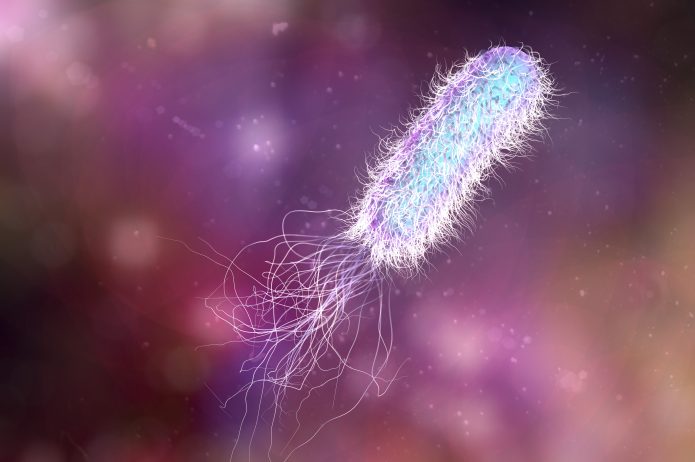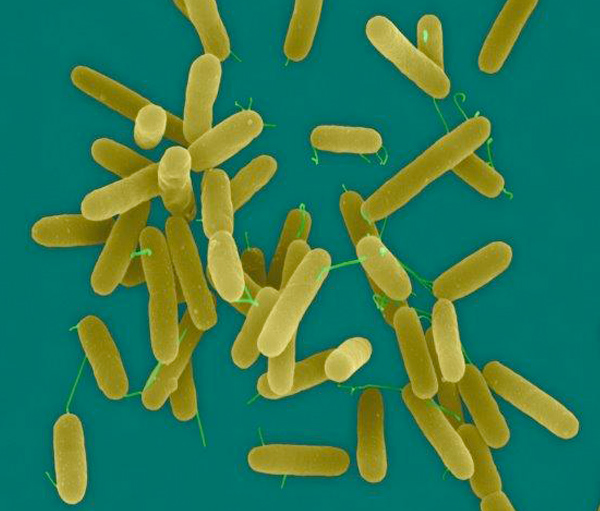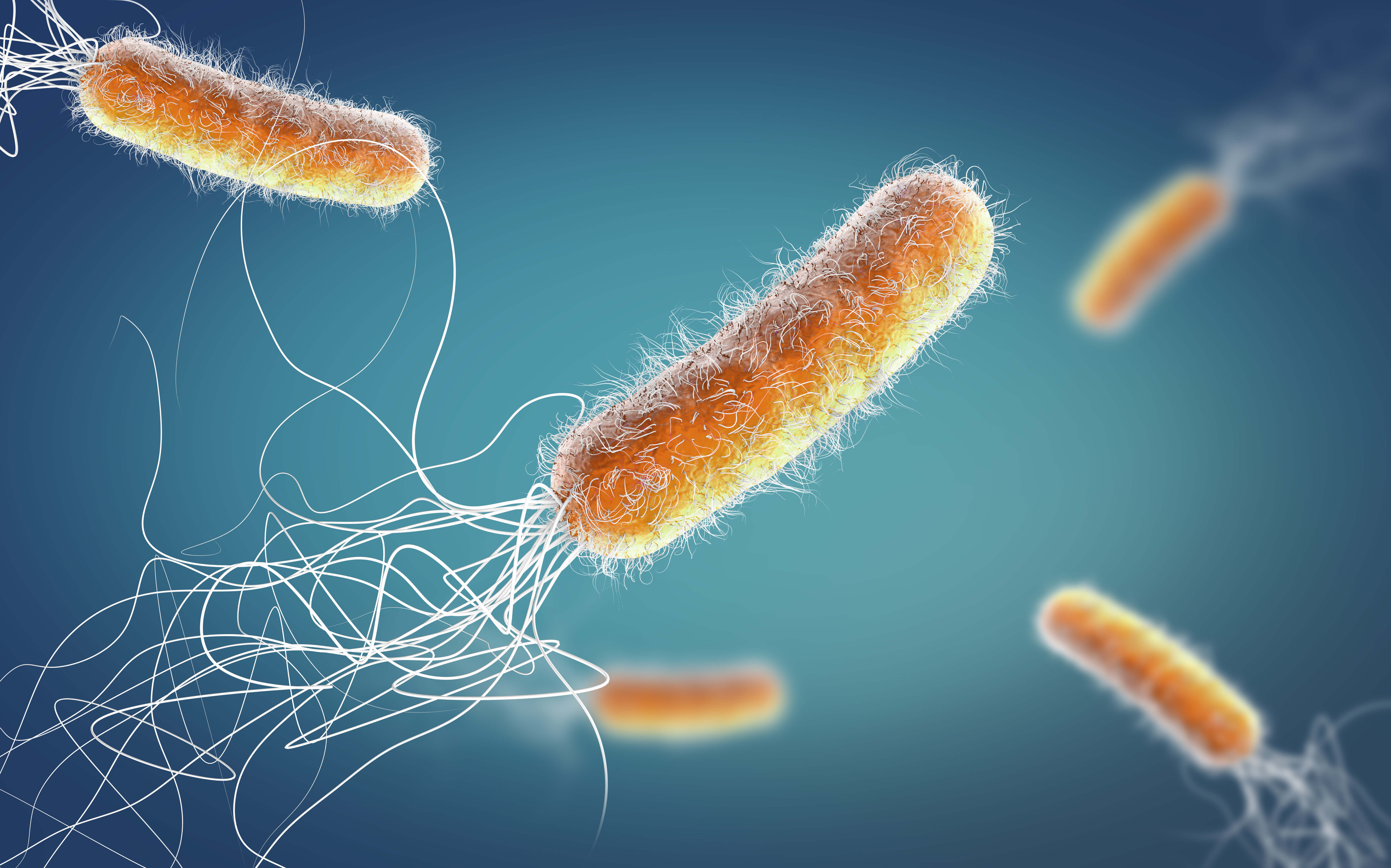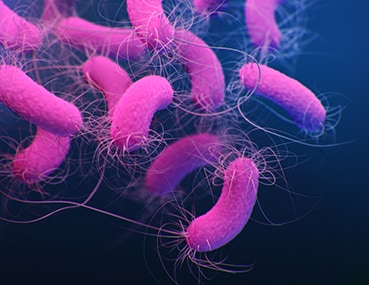Pseudomonas aeruginosa
Pseudomonas aeruginosa is a Gram-negative rod measuring 05 to 08 µm by 15 to 30 µm. Infections can appear throughout the body including the respiratory tract urinary tract ear eye blood heart bones and skin.

Pseudomonas Aeruginosa Paleczka Ropy Blekitnej Zakazenie
Infections caused by Pseudomonas aeruginosa.

. Therefore a vast number of approaches to develop novel anti-infectives is currently pursued. Pseudomonas is a common type of bacteria usually found in soil and water. The major problem leading to high mortality lies in the appearance of drug-resistant strains.
They favor moist areas and are widely found in soil and water. It thrives in stagnant water and in soil so it does exist in the world around us. The most common type that humans get is Pseudomonas aeruginosa.
The infections were caused by a strain of P. It is also quite tough and capable of surviving under the harshest of conditions and as such it can easily infect plants as well as humans. Pseudomonas aeruginosa Pseudomonas aeruginosa is a Gram-negative rod-shaped motile organism polar flagella which characteristically produce water-soluble pigments which diffuse through the mediumThe best known are pyocyanin blue-green pyoverdine yellow-green fluorescent and pyorubin red-brown produced by a small proportion of strains.
Serious infections from P. Pseudomonas aeruginosa has emerged as an important pathogen during the past two decades. For most healthy people this bacteria seldom poses a problem.
While the bacterium is a pathogen that is responsible for various hospital-acquired infections these infections are particularly severe among individuals with a compromised immune system. Pseudomonas aeruginosa is a member of the genus Pseudomonas. The germs may live in pools hot tubs and dirty contact lenses.
Pseudomonas aeruginosa is a gram-negative rod-shaped asporogenous and monoflagellated bacterium that has an incredible nutritional versatility. It is found widely in soil and stagnant water and. Pseudomonas aeruginosa is a Gram-negative bacterium often found in soil and ground water.
Of the many different types of Pseudomonas the one that most often causes infections in humans is called Pseudomonas aeruginosa which can cause infections in the blood lungs pneumonia or other parts of the body after surgery. More than 50000 of these hospital-related infections happen in the United States each year. It causes between 10 and 20 of infections in most hospitals.
Pseudomonas infections are caused by a free-living bacterium from the genus Pseudomonas. It has a pearlescent appearance and grape-like or tortilla-like odour. Strain information for clinicians laboratory scientists and public health officials.
Pseudomonas aeruginosa is a metabolically versatile bacterium that can cause a wide range of severe opportunistic infections in patients with serious underlying medical conditions. They are Gram-negative bacteria commonly found in various moist environments. These infections are characterized by an intense neutrophilic response resulting in significant damage to host tissues and often exhibit resistance to antibiotics leading to mortality.
Pseudomonas aeruginosa is a Gram-negative rod-shaped asporogenous and monoflagellated bacterium. The most serious infections happen in the hospital where people are already sick. Pseudomonas aeruginosa is the most common pathogen found in patients hospitalised for over a week and antibiotic resistance is increasing.
Occasionally people will develop conditions like hot tub rash and swimmers ear which may be due to contact with these germs. You may need to take different antibiotics if you have Pseudomonas. Pseudomonas aeruginosa is a gram-negative aerobic non-spore forming rod that is capable of causing a variety of infections in both immunocompetent and.
Infections with Pseudomonas aeruginosa have become a real concern in hospital-acquired infections especially in critically ill and immunocompromised patients. But healthy people dont usually get infected. Pseudomonas aeruginosa is the most common disease-causing form of this bacteria according to the Centers for Disease Control and Prevention CDC.
CDC will continue to monitor reports of Pseudomonas aeruginosa infection linked to invasive procedures in Mexico. Aeruginosa is an opportunistic pathogen and it rarely affects healthy individuals. Pseudomonal infections can be complicated and serious even causing death.
Aeruginosa grows well at 25C to 37C and its ability to grow at 42C helps distinguish it from many other Pseudomonas species. Antimicrobial resistance including carbapenem- and multidrug-resistance MDR also continues to increase further limiting therapeutic options. It rarely causes problems in people with healthy lungs.
Aeruginosa that expresses a carbapenemase called the Verona integron-encoded metallo-β-lactamase VIM. The bacterium is ubiquitous in soil and water and on surfaces in contact with soil or water. Pseudomonas aeruginosa is the definition of a tough bacterial strain able to survive in harsh environments.
Pseudomonas can be difficult to treat as its resistant to commonly-used antibiotics like penicillin doxycycline and erythromycin. Pseudomonas infection is especially prevalent among patients with burn wounds cystic fibrosis acute leukemia organ transplants and intravenous-d. Pseudomonas aeruginosa is an opportunistic bacteria that lives in soil water and even in environments like hot tubs.
Pseudomonas is a type of bacteria germ that is found commonly in the environment like in soil and in water. Almost all strains are motile by means of a single polar flagellum. Pseudomonas aeruginosa is a bacterium.
Only a few of the many species cause disease. Pseudomonas aeruginosa is an important nosocomial pathogen that causes serious nosocomial infections and contributes significantly to morbidity and mortality.
Czym Jest Lekooporna Bakteria Paleczki Ropy Blekitnej Dziennik Pl

Zakazenie Paleczka Ropy Blekitnej Czy Nam Grozi

Pseudomonas Aeruginosa Information And Epidemiology Services

How Does Pseudomonas Aeruginosa Affect The Pharma Industry Biomerieux Industrial Microbiology

Pseudomonas Aeruginosa Wikipedia

Paleczka Ropy Blekitnej Wikipedia Wolna Encyklopedia

Pseudomonas Aeruginosa Infection Hai Cdc
